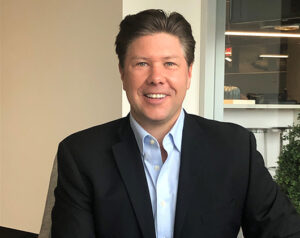Date
May 15, 2023

“Because I can understand what the end users are explaining about the day-to-day activities, I know where the pain points are, what works for them, and what they are looking for without repetitively asking. I can pick up functional deficiencies in a current lab that could pose challenges.” Said Senior Lab Planner, Chris Graul
TRIA, a principal-led architecture firm with a focus on designing unique spaces for science, technology and corporate clients, recently completed the design of Abata Therapeutics’ new 24,000-square-foot lab and office located in a new building in Watertown, MA.
The finished space gives Abata’s scientists a functional, flexible place that supports productive work, collaboration and focus. Reflective of its name, which means “tranquil” in one language and “it’s a quiet place” in another, Abata’s lab is graced with floor-to-ceiling windows, so scientists, who are discovering new therapies, can peer out to a tranquil park, with trees and the Charles River.
For this company’s lab manager, the process of getting there, designed during the tumultuous pandemic, was surprisingly smooth and peaceful. Choosing a firm that has dedicated scientists on staff proved to be a good strategy. A lab planner’s primary goal is to ensure efficient workflows that serve the end user. Acting as a communicative, collaborative partner who can provide trusted expertise, and understand and share the values, TRIA’s lab planner was able to nurture the company’s culture of innovation.
Creating a new lab in a new space while also overseeing day-to-day business operations, Abata’s lab manager wanted a firm that could provide a high level of confidence. TRIA’s Senior Lab Planner Chris Graul, a former scientist with 20-plus years in the lab, has a unique perspective developed from years of sitting behind the bench and knows that examining the form and function of their new space would lead to improved execution.
Looking through the lens of a scientist, Chris’s first task is to understand the unique workflow, which is key to the functionality and efficiency of the lab. He often asks, what angles are conducive for moving experimental components throughout the day? Does the path of travel make sense? He makes considerations that are often overlooked, for example, storage, logistics, and where to place biological waste barrels.
Scientists’ experience with space organization and practical features cannot be overlooked. Chris explains it as “living in a lab, you have to constantly adapt to changing personnel, specific work that you are doing, and equipment that might be new or changing – often making the most out of the space that you have.” This is why TRIA provides spaces that can be adaptable. There’s a good idea of how the space would be used, but no one can predict the nuances of how individuals and teams work and interact if the science is changing. Knowing what’s available and having good partnerships with vendors also allow design elements to be scalable to accommodate growth.
After serving as an Associate Director of Lab Operations for over a decade, Chris recognizes that group parity is also important. When Abata’s facility manager realized the list of wants and needs exceeded space and budgets, Chris was able to help make concessions without changing the functionality and efficiency of the lab.
TRIA is confident that Abata’s new space will help them to achieve their long-term goals.
About TRIA
TRIA is a full-service architecture firm that values client relationships above all. The firm’s principal-driven approach puts our leadership team at the table with client decision-makers, working together to envision success, solve problems and deliver exceptional results. Our lab design and corporate interiors teams strive to learn every client’s unique DNA, and by doing so, we create efficient and energizing spaces that reflect a company’s culture and foster innovation. At TRIA, we design spaces that enable business success and advance discoveries – in the lab, around the office, and beyond.


